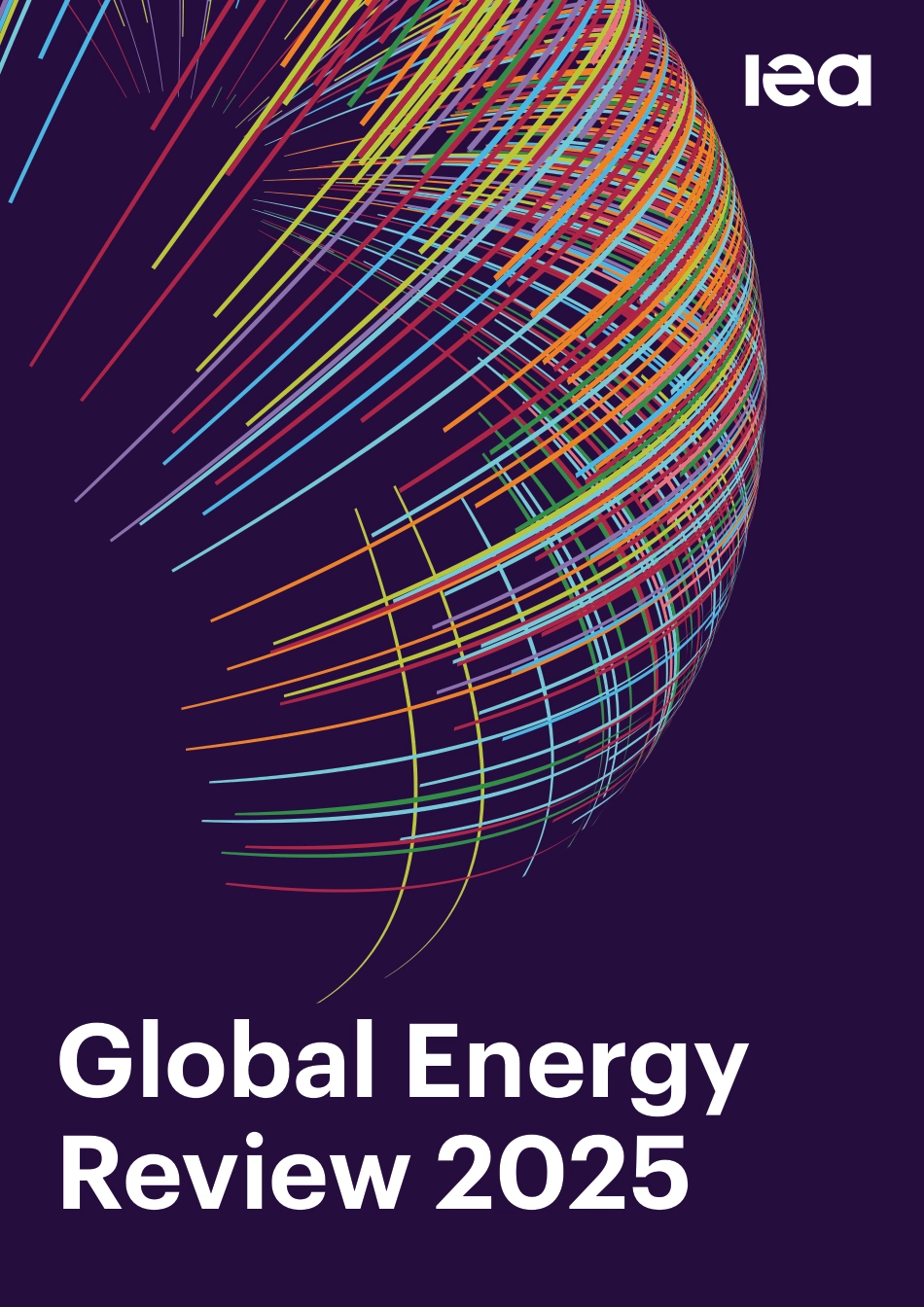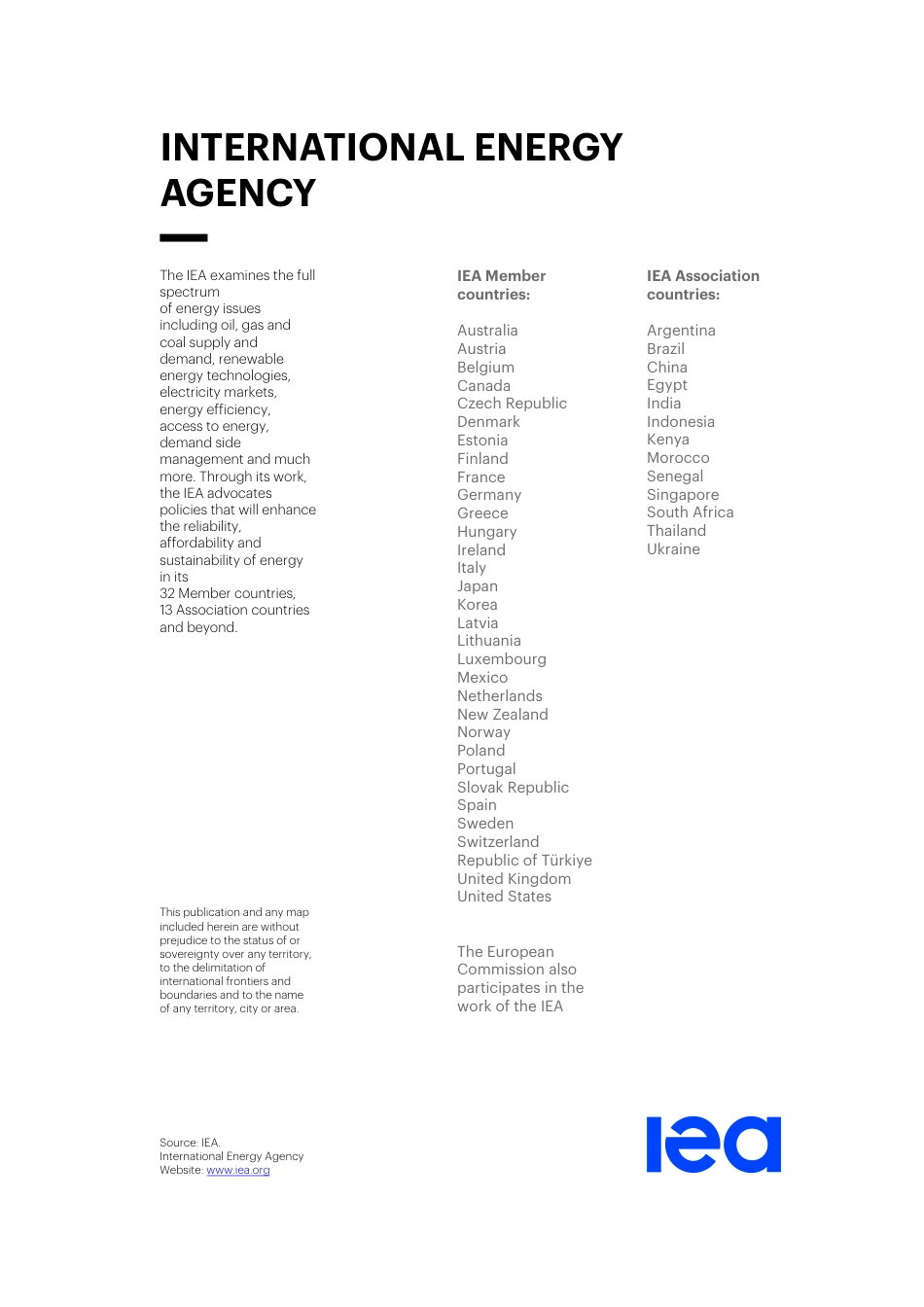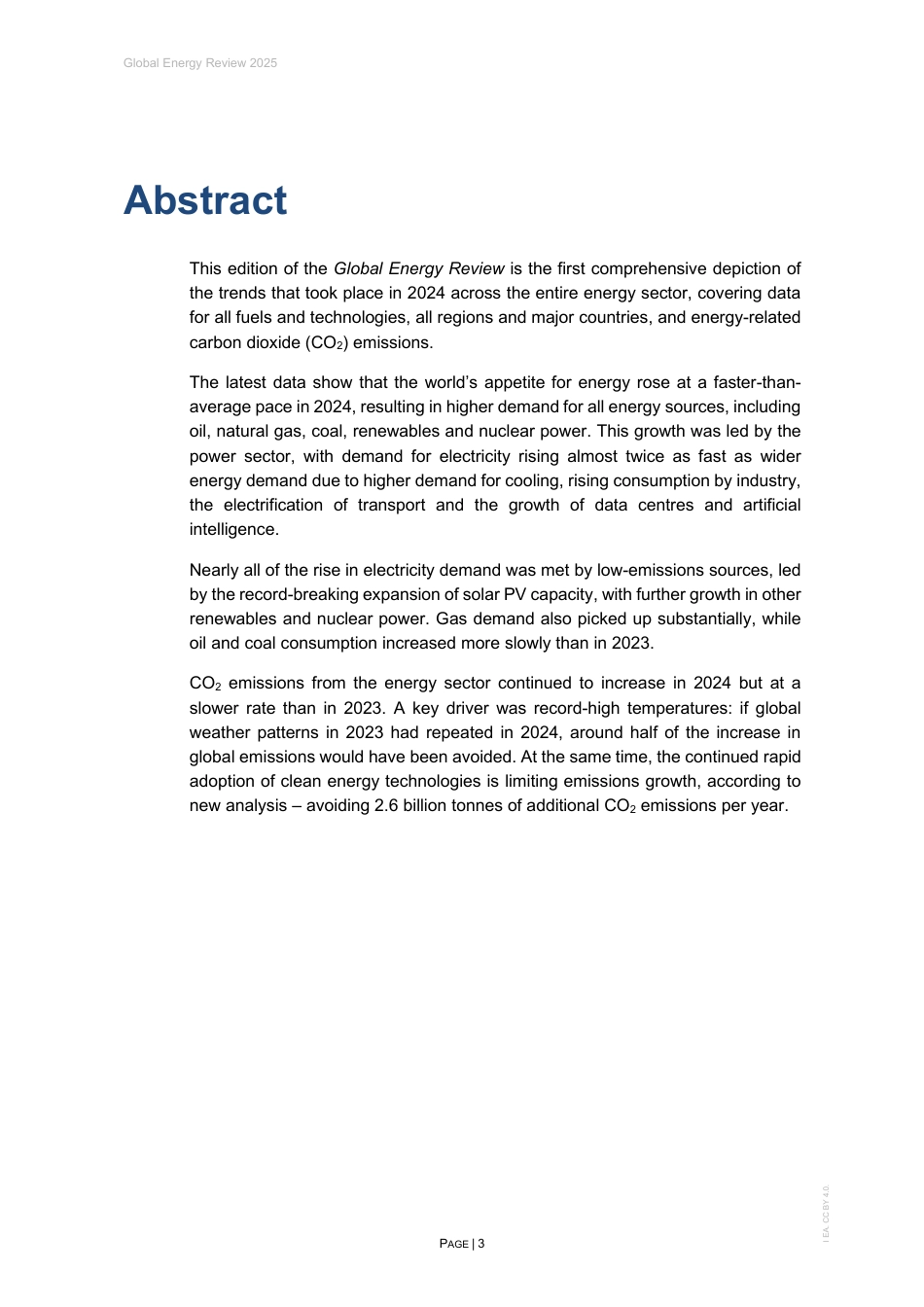GlobalEnergyReview2025TheIEAexaminesthefullspectrumofenergyissuesincludingoil,gasandcoalsupplyanddemand,renewableenergytechnologies,electricitymarkets,energyefficiency,accesstoenergy,demandsidemanagementandmuchmore.Throughitswork,theIEAadvocatespoliciesthatwillenhancethereliability,affordabilityandsustainabilityofenergyinits32Membercountries,13Associationcountriesandbeyond.Thispublicationandanymapincludedhereinarewithoutprejudicetothestatusoforsovereigntyoveranyterritory,tothedelimitationofinternationalfrontiersandboundariesandtothenameofanyterritory,cityorarea.Source:IEA.InternationalEnergyAgencyWebsite:www.iea.orgIEAMembercountries:AustraliaAustriaBelgiumCanadaCzechRepublicDenmarkEstoniaFinlandFranceGermanyGreeceHungaryIrelandItalyJapanKoreaLatviaLithuaniaLuxembourgMexicoNetherlandsNewZealandNorwayPolandPortugalSlovakRepublicSpainSwedenSwitzerlandRepublicofTürkiyeUnitedKingdomUnitedStatesTheEuropeanCommissionalsoparticipatesintheworkoftheIEAIEAAssociationcountries:ArgentinaBrazilChinaEgyptIndiaIndonesiaKenyaMoroccoSenegalSingaporeSouthAfricaThailandUkraineINTERNATIONALENERGYAGENCYGlobalEnergyReview2025PAGE|3IEA.CCBY4.0.AbstractThiseditionoftheGlobalEnergyReviewisthefirstcomprehensivedepictionofthetrendsthattookplacein2024acrosstheentireenergysector,coveringdataforallfuelsandtechnologies,allregionsandmajorcountries,andenergy-relatedcarbondioxide(CO2)emissions.Thelatestdatashowthattheworld’sappetiteforenergyroseatafaster-than-averagepacein2024,resultinginhigherdemandforallenergysources,includingoil,naturalgas,coal,renewablesandnuclearpower.Thisgrowthwasledbythepowersector,withdemandforelectricityrisingalmosttwiceasfastaswiderenergydemandduetohigherdemandforcooling,risingconsumptionbyindustry,theelectrificationoftransportandthegrowthofdatacentresandartificialintelligence.Nearlyalloftheriseinelectricitydemandwasmetbylow-emissionssources,ledbytherecord-breakingexpansionofsolarPVcapacity,withfurthergrowthinotherrenewablesandnuclearpower.Gasdemandalsopickedupsubstantially,whileoilandcoalconsumptionincreasedmoreslowlythanin2023.CO2emissionsfromtheenergysectorcontinuedtoincreasein2024butataslowerratethanin2023.Akeydriverwasrecord-hightemperatures:ifglobalweatherpatternsin2023hadrepeatedin2024,aroundhalfoftheincreaseinglobalemissionswouldhavebeenavoided.Atthesametime,thecontinuedrapidadoptionofcleanenergytechnologiesislimitingemissionsgrowth,accordingtonewanalysis–avoiding2.6billiontonnesofadditionalCO2emissionsperyear.GlobalEnergyReview2025PAGE|4IEA.CCBY4.0.TableofcontentsKeyfindings..............................................................................................................................5Globaltrends............................................................................................................................8Energydemandaccelerates,withelectricityleadingtheway.....................................8Oil.............................................................................................................................................13Oildemandgrowthlosesmomentum.......................................................................13Naturalgas..............................................................................................................................16Naturalgasdemandreturnedtostructuralgrowthin2024......................



 VIP
VIP VIP
VIP VIP
VIP VIP
VIP VIP
VIP VIP
VIP VIP
VIP VIP
VIP VIP
VIP VIP
VIP